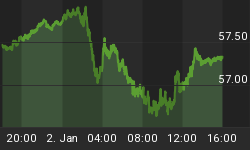Market Summary
Stocks stalled this week after comments by U.S. Federal Reserve officials, who raised expectations for more interest rate hikes in coming months than investors expected. St. Louis Fed President James Bullard was the latest to join a chorus of officials who highlighted the chance of multiple rate increases this year. The deadly bombing attacks in Brussels on Tuesday added to investors' uncertainty this week along with a strengthening dollar that weighed on commodity-related shares. "After the run that we've had ... I think it's natural for folks to take a deep breath and take some chips off the table," said Jeff Buetow, president of BFRC Services in Charlottesville, Virginia. For the week, all the major equity indexes basically ended the week flat.

Market Outlook
MKM Partners' technical analyst Jon Krinsky published a report saying that since last July, the market has been trending for 25-30 days before pausing, and then switching directions. Over the last 26 trading days, the SPX has rallied 13%, bringing it just shy of the late December high (2081). This is almost an identical move in magnitude and duration to the September to November rally. If recent history is any guide, at a minimum, we should see a pause here. The American Association of Individual Investors (AAII) Sentiment Survey measures the percentage of individual investors who are bullish, bearish, and neutral on the stock market for the next six months; individuals are polled from the ranks of the AAII membership on a weekly basis. The current survey result is for the week ending 03/23/2016. The most recent AAII survey showed 33.80% are Bullish and 23.70% Bearish, while 42.50% of investors polled have a Neutral outlook for the market for the next six months. The AAII survey continues to show healthy skepticism among retail investors. As a reliable contrarian indicator the survey signals stocks should continue grinding higher near term.

The National Association of Active Investment Managers (NAAIM) Exposure Index represents the average exposure to US Equity markets reported by NAAIM members. The blue bars depict a two-week moving average of the NAAIM managers' responses. As the name indicates, the NAAIM Exposure Index provides insight into the actual adjustments active risk managers have made to client accounts over the past two weeks. The current survey result is for the week ending 03/23/2016. Fourth-quarter NAAIM exposure index averaged 44.61%. Last week the NAAIM exposure index was 62.72%, and the current week's exposure is 59.59%. Expect money managers' equity exposure to stabilize at the current level heading into the start of quarterly earnings season. Depending on whether companies report better than expected financial results will probably determine if professional investors increase or decrease equity exposure.

Trading Strategy
The Stock Trader's Almanac reports that over the past 26 years the DJIA and S&P 500 have declined 17 times and advanced 9 with an average loss approaching 1.0% near the end of March. Excluding advancing years, the average decline is right around 1.6% for DJIA and S&P 500. End-of-quarter portfolio restructuring likely plays a role as managers lock in any gains and establish positions for the next quarter. These declines can begin on either the fourth-to-last trading day or the third. As mentioned above, the market is probably due for a pause to absorb oversold conditions. We advise making sure a stop-loss strategy is in place for all open positions in case the pause turns into a significant pullback. Feb. 11th was the 2016 low for the stock market. As evidenced in the chart below, since the market low point, stocks have exploded higher. The rally is being led by higher risk stock sectors such as energy, materials, industrials, etc. Defensive sectors such as consumer staples, healthcare and utilities are lagging which confirms investors' confidence in the current bullish move.

Feel free to contact me with questions,
















